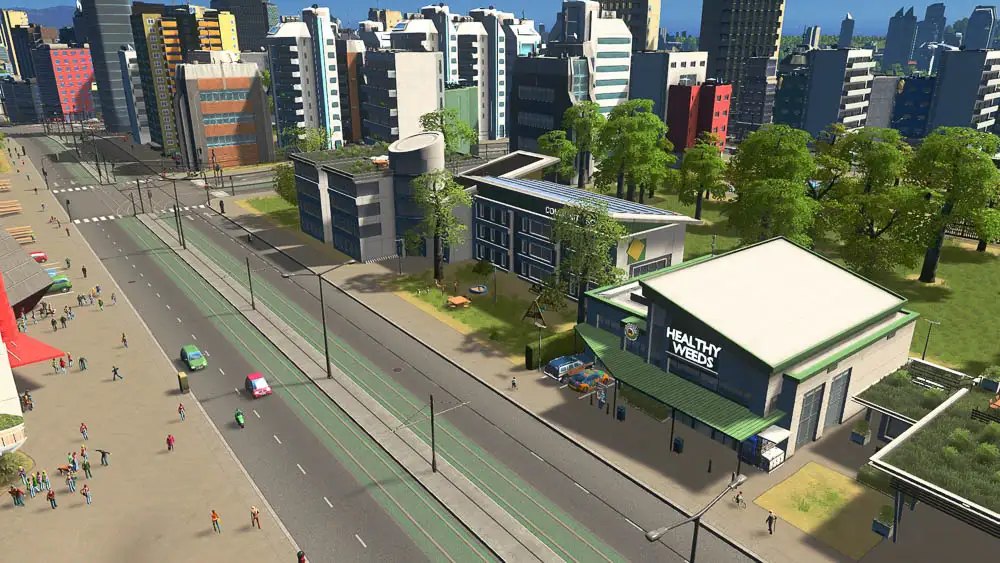
Green Cities makes it easier to build cities people want to live in. As the fifth expansion, it launched in Autumn 2017 alongside the customary free patch. It also released alongside the Concerts and European Suburbia paid DLCs.
I think Green Cities can be summed up as a DLC that’s about fixing your city’s problems. It offers lots of ways to make cities better, with very few drawbacks. Some of the new content is perhaps overpowered in fact.
The pack broadens systems rather than overhauling them, and I love making neighbourhoods green and self-sufficient. Clean, low-impact communities that are all trees, bike lanes and green roofs.
What’s new in Green Cities?
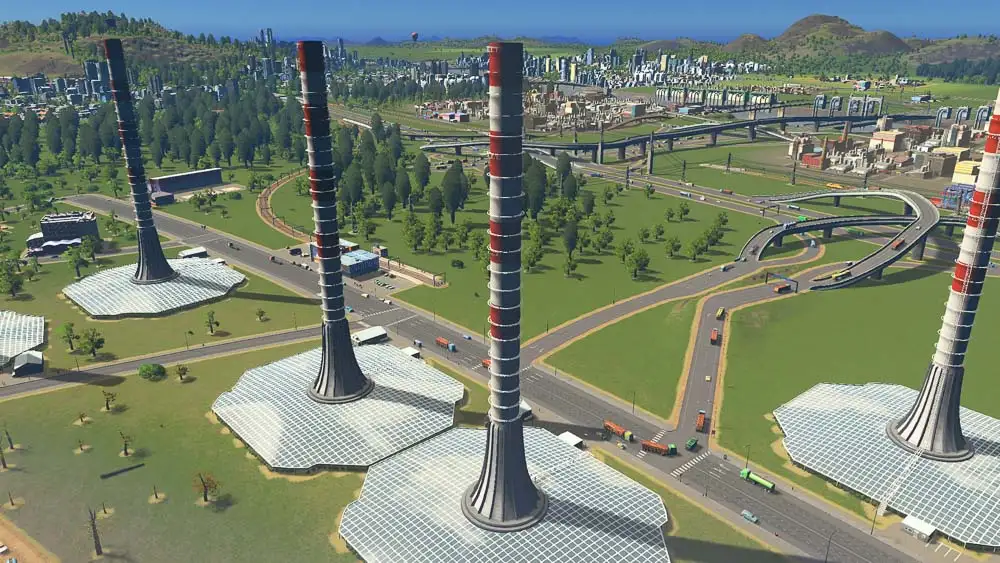
Colossal Order’s free patch alongside the expansion introduced electric cars, three new parks, intersection control for train tracks, and of course, new trees. The Asset Editor got road modding, allowing quick creation of new road combinations.
The big mechanical change was to noise from roads. After Patch 1.9, noise became based on the actual traffic passing by, rather than simply the road type. That’s great because it doesn’t punish you for using wider avenues for their aesthetics even if hardly anyone is using them.
The paid DLC helps you create clean, green cities. New specialisations, service buildings and policies make things so much easier. As a big environmentalist, I love the flavour. Being able to get rid of pollution is a big thing and thematically I just prefer making cities that tread a bit more lightly.
The pack brings over 350 assets into the game, meaning it’s probably one of the best in terms of bringing variety and a visual overhaul to your cities.
There’s three new maps and three more scenarios, the latter of which give you opportunities to use the new green tools to fix smoke-belching cities. A new monument, too - the Ultimate Recycling Plant - which can handle the waste requirements of the whole city.
The Biofuel Bus Depot is a straight swap for the standard version. Functionally similar, the new buses are much quieter, making them the better choice for residential areas.
In education, there’s much-needed variety. The three buildings - one for each level - are among my favourite additions. They’re basically worse: they cost more, take more space and have lower capacity. In exchange they offer lower electricity and water use and a wider impact radius. But that’s fine. They look great and make it easier to build campuses.
Some new park-type options arrive including a Yoga Garden and Community Pool. The new buildings increase health in a radius which is great. They also add really nice options for community diversity but are unfortunately inexplicably expensive.
Of course, there are some nice new unique buildings including the enormous Central Park which is big enough to define whole neighbourhoods. With the advent of the Parklife DLC it’s less useful but it’s nice enough.
Three new zoning Specialisations
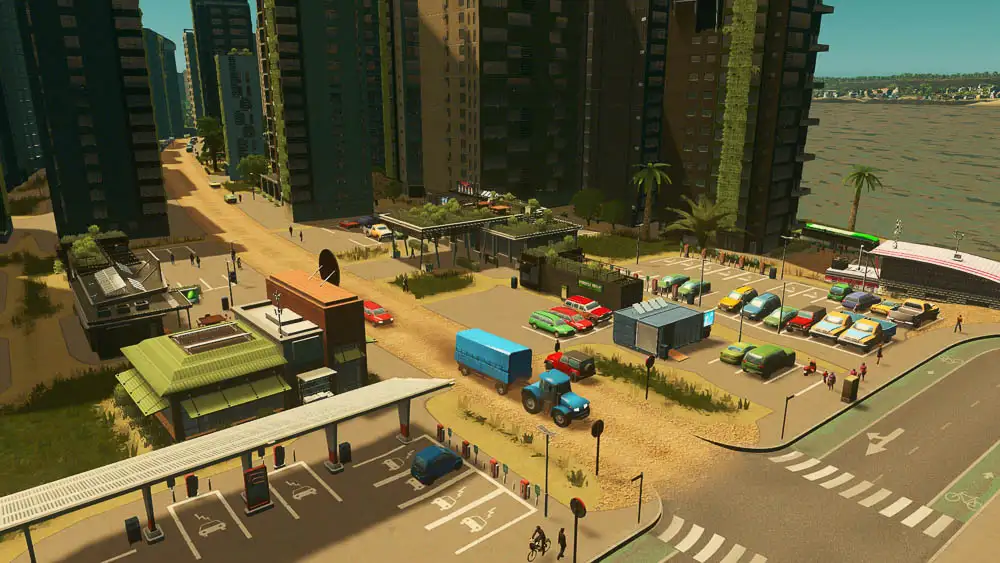
Probably the headline feature in Green Cities is the significant broadening of the specialisation system. For the first time, residential and office buildings can be tailored, and there’s a third specialisation for commercial areas.
The IT Cluster office specialisation gives you towering skyscrapers that dominate the skyline. They only offer half as many jobs as regular offices and use more electricity - but they pay 30% higher taxes. That makes them handy if you’re struggling for cash but don’t have a lot of workers to spare. Visually, they’re also great for dense city centres.
The Self-Sufficient Buildings option gives housing a distinct look based around being low-impact and environmentally friendly. There’s lots of solar power and timber construction going on. They are also the only type of specialisation that can level up.
These houses pay 30% lower taxes but generate less waste and consume less electricity. To be honest, I’m not sure that works out financially compared to normal housing but it can be offset against the IT Cluster.
All the new houses look modern, clean and attractive. The high density versions are tall and get increasingly eco-looking as they upgrade, gaining green roofs and walls. The low density versions are also very tidy but it’s worth saying that from a distance they can look a little homogenous, which isn’t popular with everyone.
Over in commerce, the Leisure and Tourism specialisations are joined by the Organic and Local Produce zones. These are a mix of organic food shops, restaurants, coffee places, electric charging stations and other modern businesses.
You’ll begin to see tractors delivering goods (direct from the farms, if you’ve got them in the city) because these shops finish production on-site. The upshot is that there’s a full 50% less truck traffic to these businesses, which has a major impact on congestion. Visually, the new buildings are low rise, open and include lots of parking spaces for electric cars, which makes them brilliant for suburban commercial centres among low density houses.
Clean, pollution-free cities
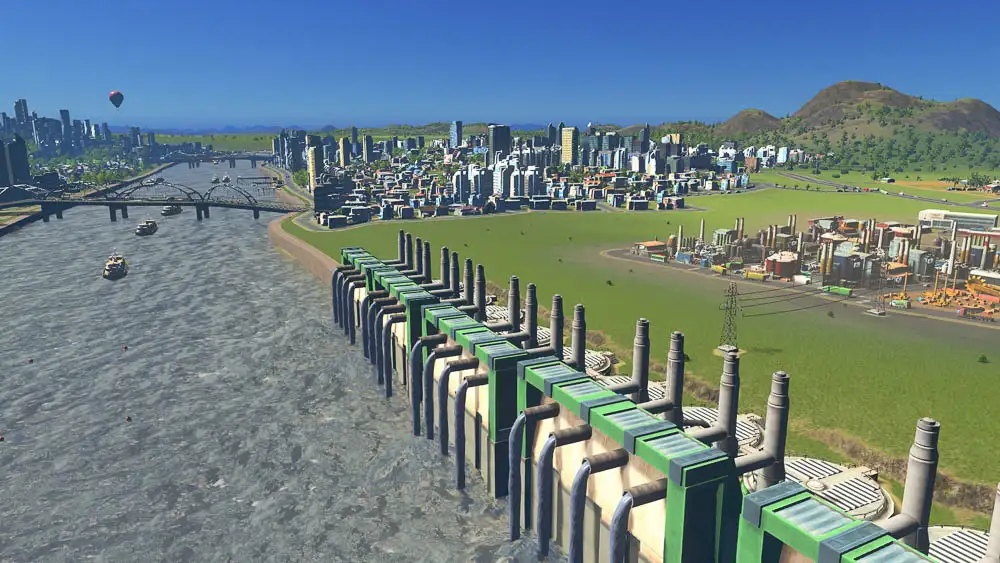
Green Cities offer powerful ways for your city to clean up its act and stop putting so much pollution into the ground and waterways.
The Eco Water Treatment Plant almost eliminates water pollution, which means that disgusting brown rivers can be brought back to life. Put them upstream of the water intakes and you’ll still see about 1% pollution of the drinking water, though.
If pollution has run out into the sea and stayed there the Floating Garbage Collector comes to the rescue. Placed down on top of pollution it will soon clear it up. To save money relocate them to new patches rather than adding new ones, then turn them off when the job is done.
The Recycling Centre is good upgrade for the Incinerator. Although it has a smaller capacity is produces much less ground pollution and contributes goods back into the city. This is a fairly minimal benefit but replaces the incinerator’s power generation.
The Ultimate Recycling Plant - despite feeling a little overpowered like the other monuments, means you can go even further and leave every other waste building behind. This plant can handle the whole city’s garbage.
Another great tool is Filter Industrial Waste, one of the DLCs four new policies. For a price, your polluting industries significantly reduce the ground pollution they generate, making neighbouring areas more habitable. It also speeds up the regeneration process if you’re thinking of putting something else in the area.
Green Cities introduces some very powerful new energy generators. The Solar Updraft Tower, especially, is great value and fairly easy to place. That and the Ocean Thermal Energy Conversion Plant means you’ve got enough heavy hitters to leave behind oil and even nuclear plants for good.
Green Cities DLC - is it worth buying?
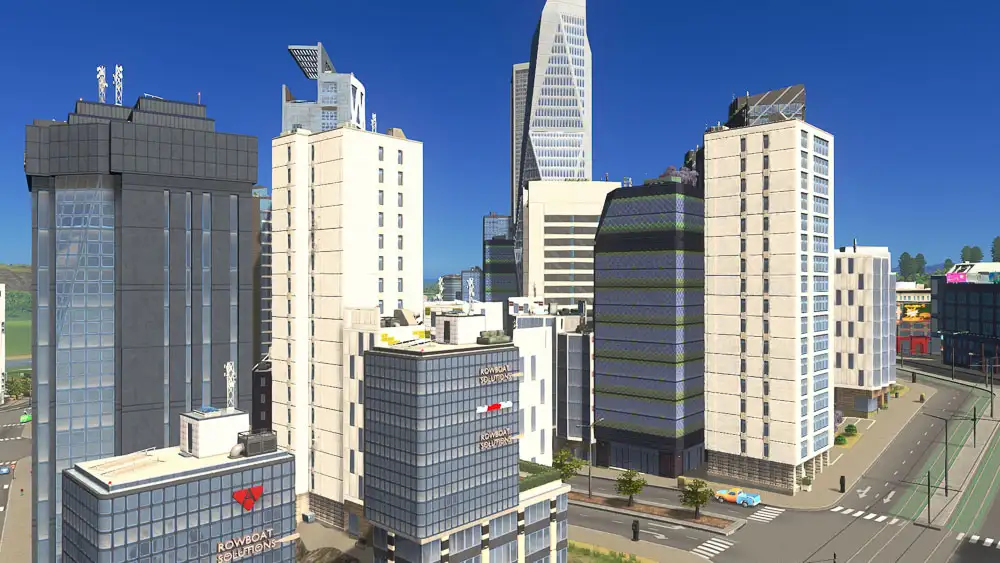
I really like Green Cities. For me, the visual and functional variety the new specialisations offer, along with all the ways of solving problems like pollution and noise, make it worthwhile.
Variety is a big part of what keeps me engaged with the game. Both making new cities but also diversifying existing ones to create distinct neighbourhoods with their own character and feel. On top of that, Green Cities adds loads of arguably overpowered tools to fix your city’s problems.
All that makes this pack a worthwhile but not essential DLC - one I’d pick up after some of the more important ones when you’re ready for some things to play with.